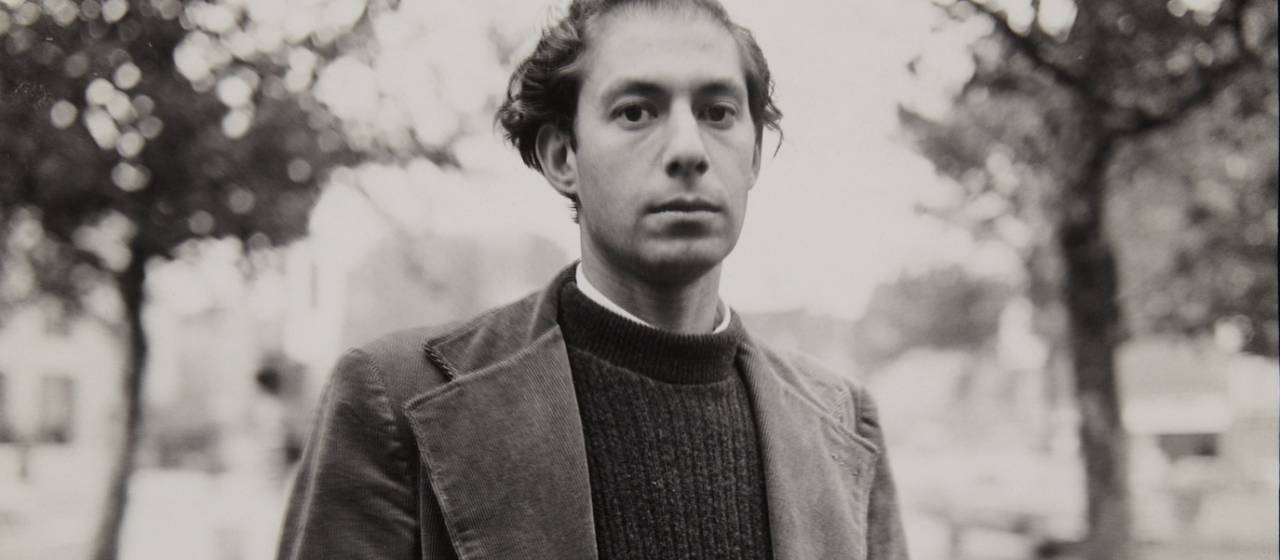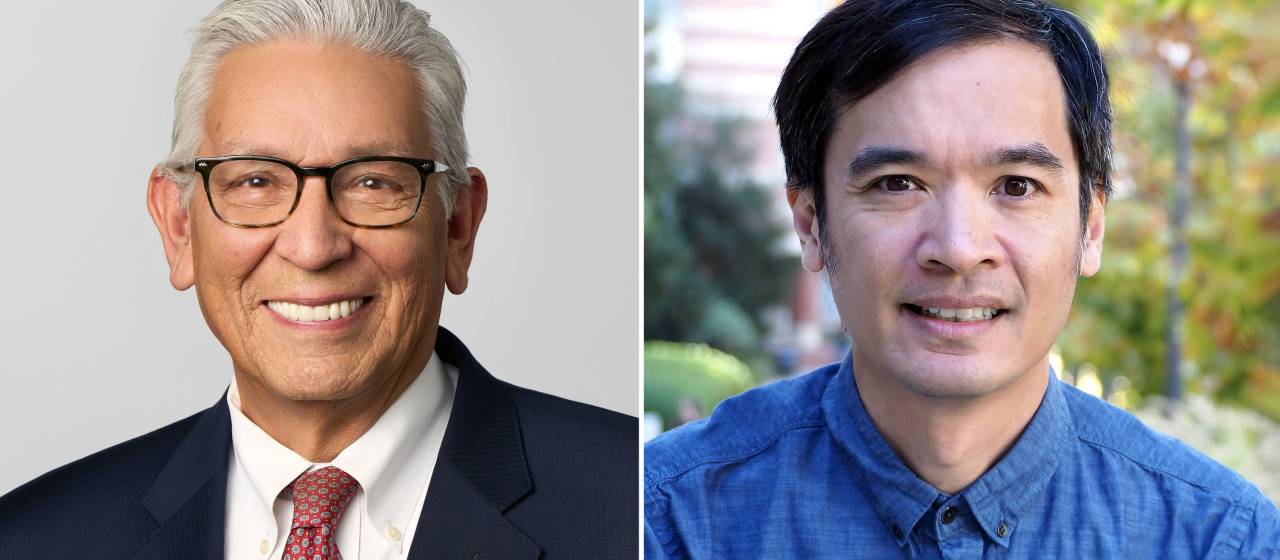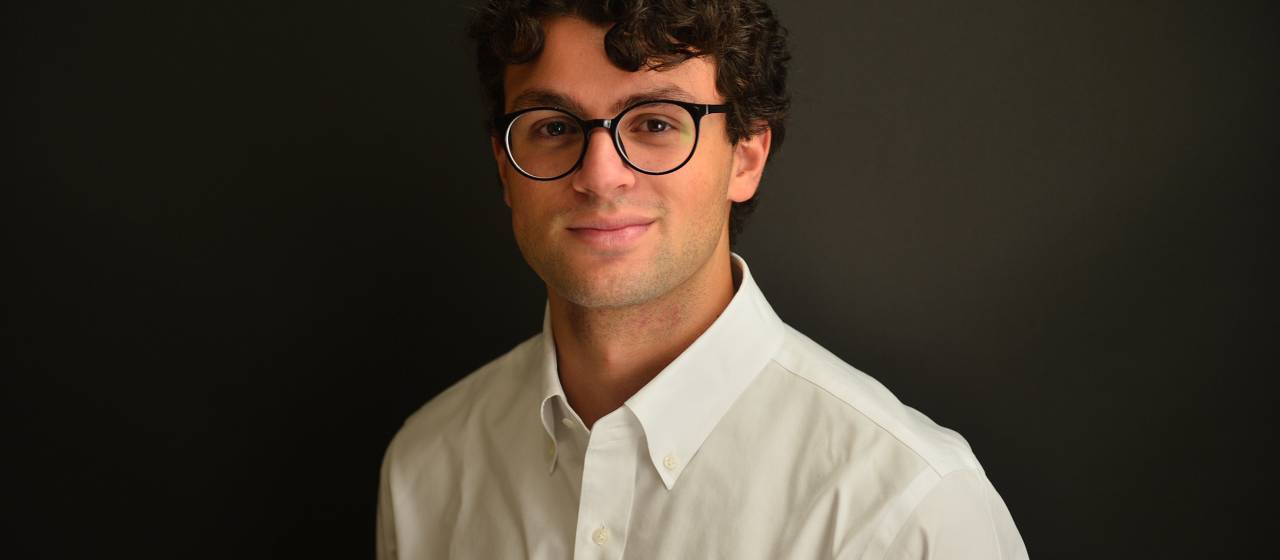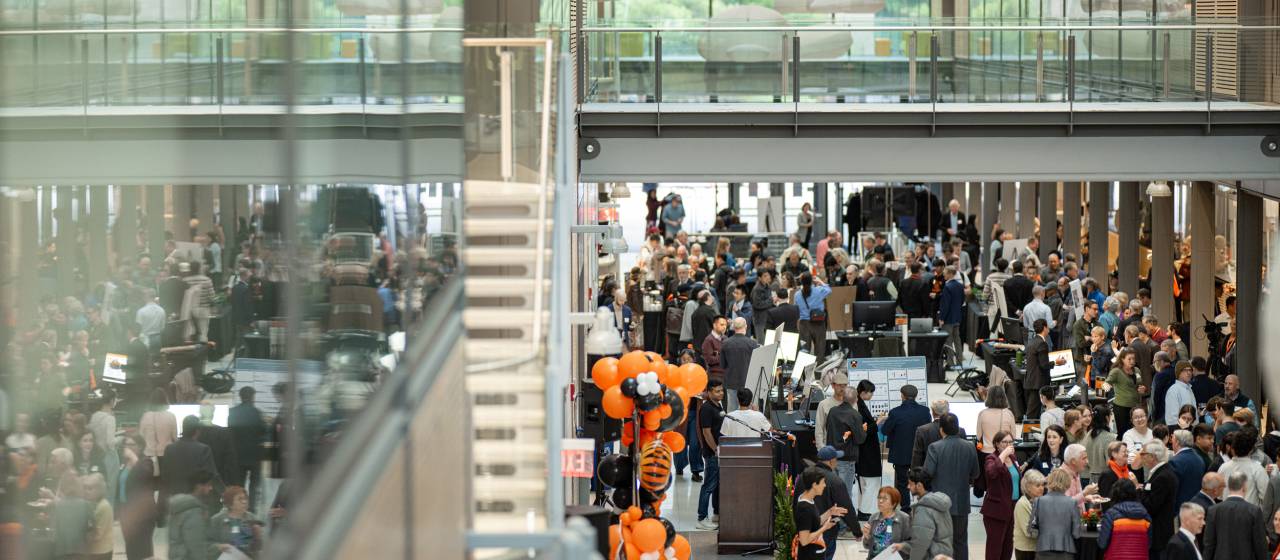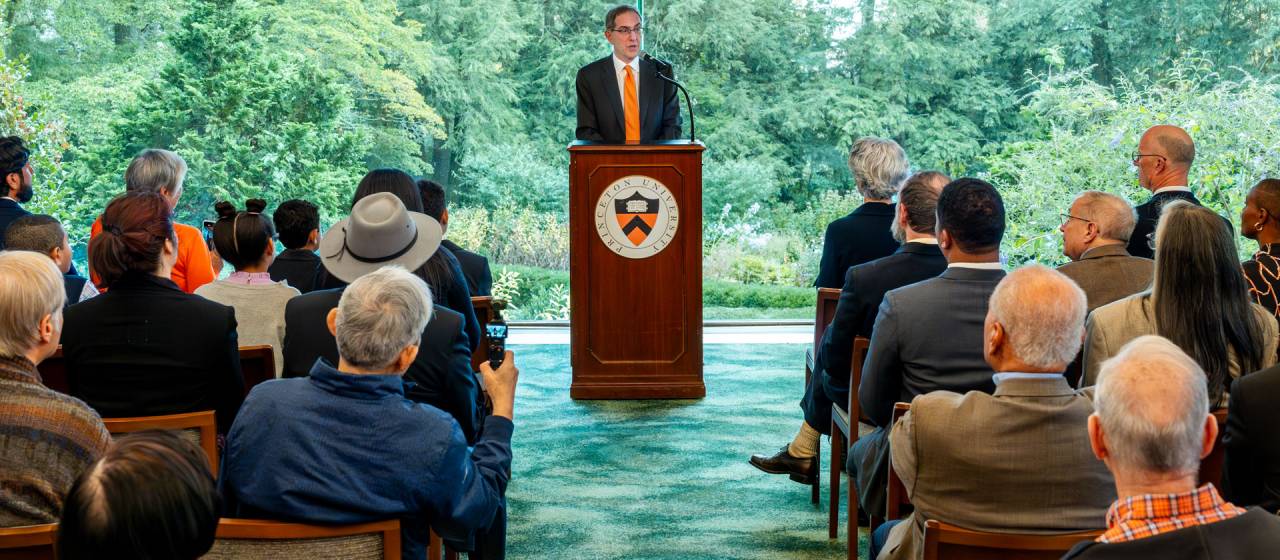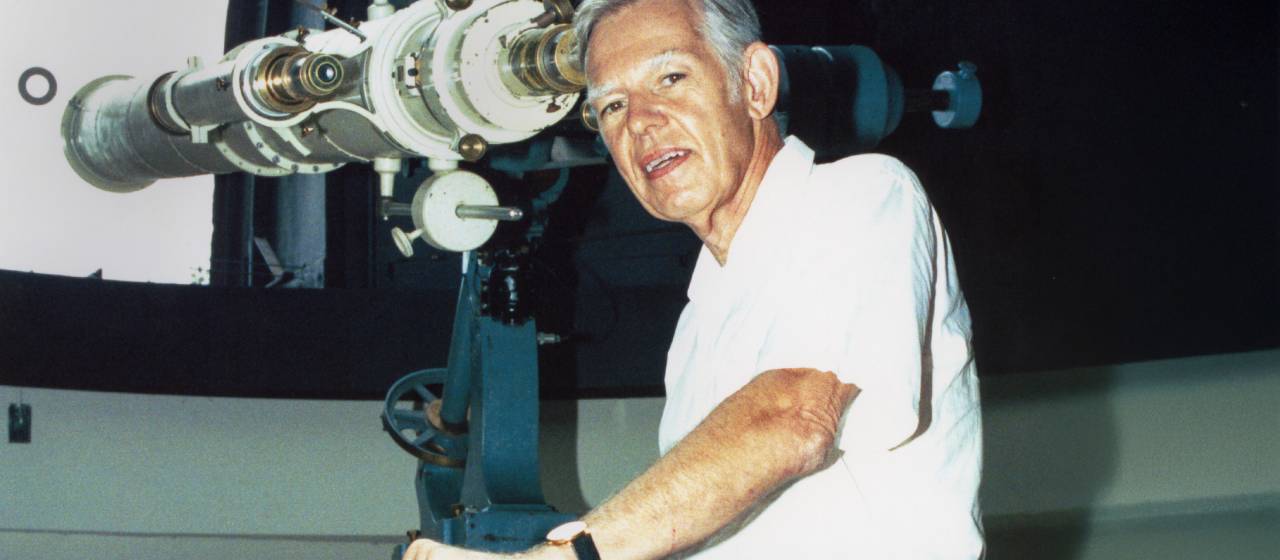Allen Rosenbaum, former director of Princeton University Art Museum with a keen curatorial eye and astute administrative foresight, dies at 88
Allen Rosenbaum, director of the art museum, emeritus, died at Calvary Hospital in New York City on Aug. 3. He was 88.
Rosenbaum joined Princeton’s staff in 1974, first as assistant director of the University art museum to then-director and photography curator Peter Bunnell, and became director in 1980, a post he held until his retirement in 1999.

A portrait of Allen Rosenbaum by Peter Hujar, from the Princeton University Art Museum collections. Gift of Allen Rosenbaum. Photo: Jonathan Prull. © Estate of Peter Hujar
“For Allen, the work of art was always at the heart of the matter, and he left an enormous mark in how he built up the museum’s collections over 20 years as its director,” said current museum director James Steward. “From Northern European Mannerist painting to the arts of the ancient Americas, Allen helped assure that Princeton would have areas of strength that are among the finest in the country.”
Jill Guthrie, a former associate director of publications and communications at the museum who worked closely with Rosenbaum, said that he made important and ambitious purchases during his tenure, especially after the establishment of the Fowler McCormick, Class of 1921, Fund.
Rosenbaum was “known for his curatorial flair,” Guthrie said, and “saw quality in works that might otherwise have gone unnoticed,” acquiring “The Martyrdom of Saint Justina” by Giulio Cesare Procaccini, the first work by the then obscure Lombard artist to enter an American collection. He also added Pinturicchio’s “Saint Bartholomew” and Pietro da Cortona’s “Saint Martina Refuses to Adore the Idols,” prime examples of artistic styles by major masters, building on the collection’s strength in Italian art. He also supported the acquisition of ancient pottery, sculpture and textiles, all in advancement of the University’s teaching mission.
Expansive interests laid the foundations for the museum’s growth
Steward said that Rosenbaum also had an important impact on the administrative structure of the museum, ensuring the growth of not only the collections but also the museum as a vibrant hub of learning and discovery for the greater University community.
“In the decades prior to Allen’s directorship, the museum was a rather informal place with a very small staff,” Steward said. “Allen did a great deal to professionalize the museum and its practices, laying the foundations for growth — in the physical plant, in staffing and in budget — that we’ve seen in the 25 years since his retirement.”
Rosenbaum initially worked with a small group of distinguished faculty curators that included Bunnell, along with Gillett Griffin, curator of Pre-Columbian and Native American art, emeritus, and Wen Fong, the Edwards S. Sanford Professor of Art History, Emeritus, and professor of art and archaeology, emeritus. He then systematically expanded the museum’s staff, adding full-time curators and departments — among them J. Robert Guy, succeeded by J. Michael Padgett, as curator of ancient Mediterranean art.
Early in his directorship, Rosenbaum was instrumental in the expansion of the museum building itself. The Mitchell Wolfson Jr., Class of 1963, Wing opened in 1989, adding 27,000 square feet of new exhibition space, a paintings conservation studio, and art storage and preparation spaces.
Rosenbaum was born on Jan. 28, 1937, in New York City, to Harry Rosenbaum, a furrier, and Ethel (Edelstein) Rosenbaum. He earned a bachelor’s degree from Queens College in 1958, and a master’s in art history from New York University’s Institute of Fine Arts in 1961. Before joining Princeton, he was a senior lecturer at the Metropolitan Museum Art in New York, an instructor at the School of Fine Arts at the University of California-Irvine and assistant director of the former Shickman Gallery in New York.
J. Patrice Marandel, chief curator emeritus of European art at the Los Angeles County Museum of Art, had known Rosenbaum since his years as a lecturer at the Metropolitan Museum of Art. He said Rosenbaum’s art interests were expansive — ranging from the Renaissance and Baroque Rome to the art of Japan, French academic painting and contemporary art of his time — and noted that he was friendly with Andy Warhol, David Hockney and Henry Geldzahler, the iconic curator of modern art at the Met.
Rosenbaum brought all these sensibilities to bear during his years as director of Princeton University Art Museum (which was called The Art Museum, Princeton University, at that time), Marandel said. “He was an indefatigable director. Even though the gravitas of academia remained part of his intellectual framework, Allen had always been more attracted to the tactile world of objects themselves, a taste that would naturally lead him to become one of the best museum directors in America.”
Mary Levkoff, a 1975 Princeton graduate and an art and archaeology major, became friends with Rosenbaum during her career as a curator at the Los Angeles County Museum of Art and the National Gallery in Washington, D.C., and later as the museum director of the Hearst Castle in California. She said Rosenbaum can be remembered not only for modernizing Princeton University Art Museum’s exhibition aesthetic but also in his interactions with students.
“At Princeton, he dramatically reinstalled the collection so that it was inviting and intriguing,” she said. “He was one of the first directors or curators in American museums to repaint the stark white galleries popular in the 1960s and ’70s with deep jewel tones to create an aura of richness. In doing so, he brought the Metropolitan Museum of Art's sophistication to Princeton. He also had a genuine engagement with serious undergraduates as well as graduate students.”
Prominent exhibitions that Rosenbaum helped mount at the museum included “Gates of Mystery: The Art of Holy Russia” in 1992; “The Olmec World: Ritual and Rulership,” a major loan exhibition co-curated with Gillett Griffin in 1995; and “In Celebration: Works of Art From the Collections of Princeton Alumni and Friends of the Art Museum” in 1997, commemorating the University's 250th anniversary.
In its review of “In Celebration,” which featured 370 objects from across centuries and around the world, The New York Times acknowledged Rosenbaum’s keen curatorial eye: “Some art exhibitions have a story to tell; others have a point to make. Every once in a while, one comes along in which the works were chosen for no other reason than that they are very good. If the selection is made with a sharp eye, these can be some of the most pleasurable exhibitions of all: the art gets to tell its own stories, make its own points. The curatorial staff of the Art Museum at Princeton University and its director, Allen Rosenbaum, would appear to have very sharp eyes indeed.”
Strengthening the museum’s mission to advance teaching
As museum director, Rosenbaum’s wide-ranging impact also included his dedication to making objects in the museum’s vast collections available to Princeton faculty for the purpose of teaching undergraduate and graduate students. That mission continues to this day, said Caroline Harris, the museum’s current head of education, who got to know Rosenbaum at museum events after he had transitioned to his role as director emeritus.
“I think of him often as I have the immense pleasure of teaching with the many extraordinary objects that came into the collections during his tenure,” she said, “including masterpieces of ancient American art acquired in those years thanks to his partnership with Gillett Griffin. Allen used to say that he did not know anything about Pre-Columbian art, but he knew good objects. And so he did.”
Harris added that she thinks of Rosenbaum most often when she teaches with works that reflect not just his “sure aesthetic sense, but also his own scholarly interests,” including, as Steward also noted, the museum’s exceptional collection of Northern European Mannerist works. “I imagine it pleased him enormously to know that generations of Princeton students — including my own — have discovered exquisite examples of works by Abraham Bloemaert, Hendrik Goltzius, Cornelis Cornelisz. van Haarlem and others on the walls of Princeton’s museum thanks to his leadership.”
Rosenbaum was a member of the Association of Art Museum Directors and the American Council for Cultural Policy. He served on the board of directors for the Godwin-Ternbach Museum at Queens College and was a member of the Art Advisory Committee for the Port Authority of New York and New Jersey.
Upon retirement, Rosenbaum moved back to his native Manhattan, where his wide circle of friends and love of music became the center of his life, and he attended the opera and concerts at Lincoln Center and Carnegie Hall four or five nights a week. He also continued to pursue the collection of art for his own enjoyment. His apartment became a kind of museum, always a work in progress, where he delighted in welcoming guests to see his newest acquisitions.
“Allen’s curious eye never stopped roving,” said Steward. “In his later years, he became especially passionate about Japanese art, moving far beyond his training in the art of the Italian Renaissance without ever losing his discernment of quality and condition.” He devoted himself to building collections of Noh masks, Japanese baskets, meerschaum pipes and European wooden sculpture.
A memorial gathering for Rosenbaum will be scheduled for the fall in New York. Donations in his honor may be made to Doctors Without Borders/Médecins Sans Frontières, American Society for the Prevention of Cruelty to Animals (ASPCA) and St. Jude Children’s Research Hospital.
View or share comments on a memorial page intended to honor Rosenbaum’s life and legacy.
Latest Princeton News
- Smithsonian executive Kevin Gover ’78 and Fields Medalist mathematician Terence Tao *96 to receive top alumni awards
- Princeton senior Isam Mina awarded Rhodes Scholarship for Jordan
- Founding partner Microsoft to bring new Discovery AI technology to NJ AI Hub
- Celebrate Princeton Innovation spotlights entrepreneurial researchers and their impact
- Prospect House spaces dedicated for ‘exemplary individuals’ who helped to shape the University and the world
- Russell Kulsrud, one of the last survivors of Project Matterhorn, dies at 97



